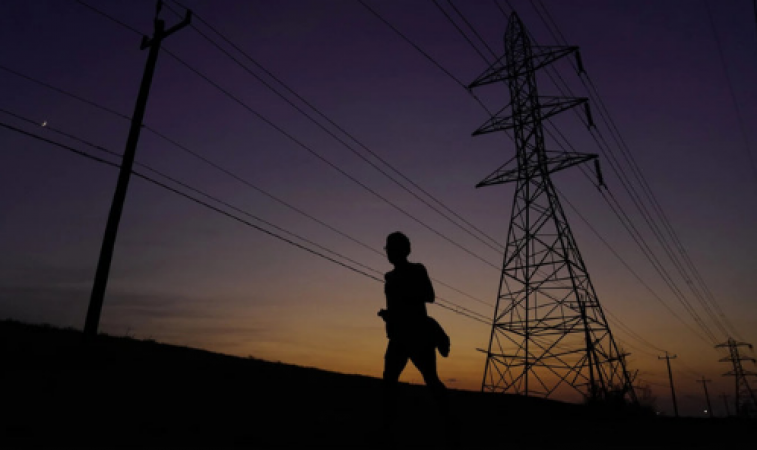
Austin: As more dangerous heat is anticipated, temperatures in the central US have risen dramatically, killing people in some states, according to a national weather service official on Wednesday.
As some cities prepare for triple-digit temperatures through August, the extreme heat wave has broken records, damaged roads and water lines, and forced the evacuation of a nursing home this week. According to officials, 25 people have died in Louisiana this summer from heat-related causes, and a 1-year-old died in Nebraska after being left in a hot van.
According to Alex Lamers, a meteorologist who coordinates warnings at the Weather Prediction Centre of the National Weather Service, the heat is anticipated to become "dangerous to the average person" if they don't have air conditioning.
Also Read: The Magical Transformation of 'Pal Bhar Ke Liye'
More frequently than at any other time since World War II, cities in Texas and Louisiana have felt temperatures above 110 degrees, according to Lamers. According to him, states from Florida to New Mexico have been hardest hit by the intense heat.
Due to high demand and low reserves, the Electric Reliability Council of Texas twice last week requested energy conservation from the public. From Wednesday to August 27, the organisation released a weather advisory.
Despite the intense heat and high demand, the council has not experienced any power outages this summer, according to Alison Silverstein, a Texas-based independent energy analyst and former adviser to the state's energy regulator.
But as time passes, there are risks, according to Silverstein, who likened it to a car overheating.
"At least your car on a long trip has a chance to rest overnight and cool off," she added. Many of these plants have been operating continuously since June, or nearly so.
Experts caution that the extreme strain of prolonged and recurrent heat waves caused by climate change may cause infrastructure, such as roads, to give way. As a "precaution to reduce the impact on the rail when it gets hot," spokeswoman Kristen South said Tuesday, Union Pacific has increased speed restrictions this summer on its network of more than 32,000 miles (51,499 kilometres) of Western track.
According to a 2017 study by researchers from the University of Arizona and Arizona State University, costs for road maintenance and replacement due to rising temperatures in the US could reach $26.3 billion by 2040, with Texas, California, and Illinois expected to sustain the majority of the damage.
In Texas, the heat has already resulted in an unusually high number of water line breaks and road problems.
According to transportation department spokesman Danny Perez, Texas officials are keeping an eye on the temperature, the condition of the roads, and suggestions from locals in order to address problems as soon as possible. Following about ten other reports of a similar nature in June, Houston officials learned of the likely heat-related damage to a road on Sunday, he said.
The dry weather and high temperatures in Houston have caused the ground to shift, damaging the city's old pipes. According to city data, water leaks are the most frequently requested service by residents. In comparison to the same month last year, there were 25% more reports of water leaks.
According to Houston Public Works spokeswoman Erin Jones, demand and leaks are both rising, and the city is using emergency purchase orders to add contractors for repairs.
San Antonio Water Systems reported on Wednesday that there have already been more breaks this month than there were in the entire month of July. Customers must reduce their outdoor watering, according to the agency.
Additionally stressed are cooling systems. After the air conditioning failed in temperatures that felt as high as 115 degrees (46.1 C) on Tuesday, Missouri firefighters assisted in removing 117 patients from a nursing home in Kansas City. Seven patients with COVID-19 were taken to hospitals, according to authorities, but the majority of the nursing home residents at Parkview Healthcare were transferred to other facilities.
The Missouri Department of Health and Senior Services reports that since August 2014, a minimum of 20 complaints have been filed against the facility.
It was upsetting for Denise Oates, whose mother resides at the facility, to learn via social media that the air conditioning failed, she told television station WDAF. According to Oates, she called but was unable to get any information about what was happening.
Just call me and let me know before you move her, I'm like. I must know her new address," Oates said. Cor Healthcare Partners, the facility's owner with headquarters in Baltimore, did not immediately return messages seeking comment.
The heat hasn't been felt everywhere. A record-breaking 60 degrees (15.6 C) were recorded in Dickinson, North Dakota, on August 20, breaking the previous record of 62 from 1974. Bismarck equaled its 1966-set record of 62 on the same day. Sunday's temperatures were expected to According to Corey King, an emergency response specialist with the National Weather Service, Sunday's low temperatures were caused by an unseasonably cool air mass, clouds, and rain, but warmer weather is expected in the coming days.